In a time when consumers are hungry for information and value, a good content marketing strategy is your key to earning their trust and loyalty. And with that comes more followers, customers, and buyers.
But in 2023, things have been changing in how content is made, thanks to AI tools, of course. These tools make creating content and attracting visitors faster and somehow easier for website owners.
Here’s the catch, though: with more automation, there’s a risk of lots of generic, shallow, and often wrong content flooding the internet.
The good news? That’s your very chance to set you apart in this content crowd. “What exactly is that?” you may ask. It’s good old-fashioned human research and care.
So, in the world of content marketing strategy in 2023, remember that authenticity and good research will make your content stand out.
Okay, it all sounds great but what exactly falls into this big umbrella term which is content marketing?
Findout how we can help you create content marketing strategy that works wonders!
What is Content Marketing & How Can You Make the Most of It?
Content marketing involves planning, creating, and sharing content to connect with potential customers. It serves multiple purposes for businesses, such as
- raising brand awareness among their target audience
- attracting new leads
- improving conversion rates
- acquiring more customers, and ultimately
- increasing revenue
Importantly, content marketing is closely tied to SEO. When a website features high-quality and unique content, like product descriptions, blog posts, or even content shared on other platforms like sponsored articles or social media, it tends to rank higher in search engine results.
In the following sections, we’ll explore the strategies and techniques to make the most of content marketing, helping you achieve your business goals and connect effectively with your audience. Ready?
First stop of the content marketing strategy guide? Types of content that you can actually create.
Content Marketing Types to Keep Your Audience Engaged
You want to become more visible and discoverable to your target audience, and later keep them engaged or interested in your brand. You know that various content marketing strategies can achieve precisely that.
The big question is, however: “Where should I start with my content marketing strategy?” and “What options do I actually have?” Let’s see what content marketing types you have so it becomes easier for you to decide which option is going to help you get the visibility and web traffic you seek.
1. Blog Content Marketing
A blog is basically the foundational cornerstone of a content marketing strategy and an essential tool for nearly every brand with an online presence. That’s one of the best outlets that you can use to connect with your customers and share valuable knowledge.
Here’s a couple of tips on how you can make your blog content marketing work well:
- Keep it fresh. Write new blog posts regularly, like 2-3 times a month. This tells your readers that your blog is active and keeps them coming back for more.
- Share good info. Give your readers useful information. The better the info, the more people will like your blog and come back.
- Talk to your readers. Encourage your readers to leave comments on your posts and share their thoughts. Google likes it when people interact with your blog, meaning user-generated content can help your blog show up in search results.
- Add pictures and other visuals. If your posts are usually long, consider adding pictures, charts, or videos to make them more interesting.
- Make it easy to read. Use clear titles and headings to make your text easy to read. Highlight the important stuff so people can quickly understand what you’re saying.
- Make it original. Base your text on unique research, data, or talking to customers. It should also involve working with people who talk to customers and researching the topic and keywords.
- Make it comprehensive. It doesn’t matter if the article is super long. What matters is that it covers the topic really well, like a complete book about a favorite subject.
📌 There is one more important issue worth mentioning in this Content Marketing Strategy Guide, and that is E-E-A-T. It stands for Experience, Expertise, Authoritativeness, and Trustworthiness, and is especially useful when it comes to increasing organic views.
In plain English, when Google looks at content, it checks if the person who wrote it has experience with the topic. For example, have they actually used the product they’re writing about or been to the place they’re talking about? This is why making sure your content is reliable and comes from someone who knows what they’re talking about is becoming more important.
One last thing, if you’re now wondering how content marketing actually differs from publishing regular blog posts, be sure to check our article explaining how content marketing vs blogging actually works.
Different Types of Written Content and Their Goals
It’s important to know that your blog can feature various types of content, including educational articles, promotional posts, product spotlights, and customer stories, among others. What’s fascinating is that some of content types work better than others, and they can also help you reach different goals.
Below, you can compare these written content types and explore the kind of engagement they can generate. These insights are based on findings from Semrush.
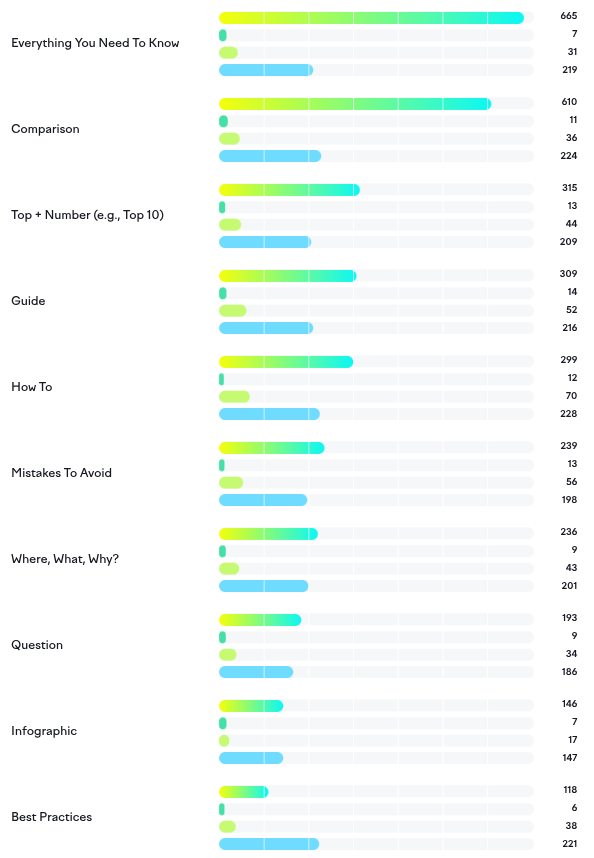
source: Semrush
Based on the information above, here are three main conclusions:
✨ Conclusion #1:
To get more shares, write articles about common mistakes and help readers fix them.
✨ Conclusion #2:
If you need more valuable backlinks, try educational blog posts like how-to guides and comparisons.
✨ Conclusion #3:
To increase organic traffic, create content that covers everything people need to know about an issue relevant to your niche.
2. Social Media Content Marketing
Social media is like a big online playground with lots of different places to hang out. The most popular ones are social networking websites, such as Facebook, X (former Twitter), and LinkedIn. They’re where people go to connect with friends, get the latest news, or grow their professional networks. Then there are the social video spots, like YouTube, and the shorter ones like TikTok.
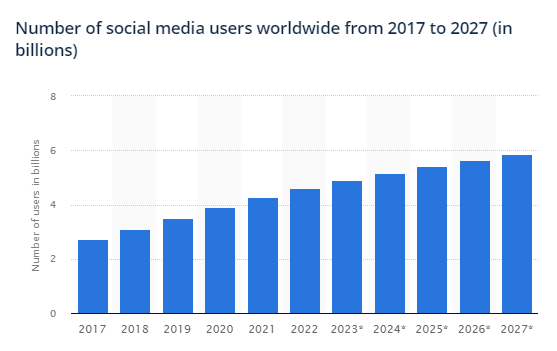
source: Statista
When it comes to creating a content marketing strategy on social media, you need to start by picking the right playground. There are plenty to choose from, like Facebook, X, TikTok, Pinterest, LinkedIn, and Instagram. There is also the so-called Web 2.0, connecting platforms like Reddit and Quora.
The best platform for you depends on your business and who you want to talk to.
Social media is always changing, so it’s essential to stay updated. Two years ago, who would have thought TikTok would be such a big deal? How big? Well, it has become super popular, with over 1.7 billion users in 2023.
Now, let’s talk about creating content for social media. Naturally, each platform has its unique best practices to connect with your target audience, and there are even specific TikTok SEO techniques for expanding your content’s reach. However – and luckily – there are also some universal rules that apply across all platforms.
- 👉 Strive to create high-quality content. This might sound basic, but it’s crucial. Social media is super competitive, so your content has to be top-notch and unique to stand out.
- 👉 Engage your audience. Social media has lots of cool stuff to help you engage with your audience, like memes, tips and tricks, stories, contests, news, GIFs, and animations. Use whatever suits the platform and your audience.
- 👉 Keep it short and simple. People’s attention spans are short on social media, so get to the point quickly. Long paragraphs won’t work here.
- 👉 Call your audience to take an action. Always add a CTA at the end of your social media posts. It tells people what to do next, like visiting your website, signing up for a newsletter, or asking a question.
Viral Content Marketing
No content marketing guide would be complete without mentioning viral content marketing. While pretty challenging to succeed at, it is one of the most effective marketing strategies for increasing brand recognition and attracting a broader audience to your brand. It happens, meaning your content goes viral, when something you create – a humorous video, a heartwarming story, or an engaging challenge – becomes so popular that it spreads like wildfire as people can’t stop sharing it.

source: The Guardian
Think of the “Ice Bucket Challenge” where folks dumped ice water on their heads to raise awareness for ALS, or the “Baby Yoda” memes that flooded social media after “The Mandalorian” series.
Viral content can boost your brand’s visibility and engagement significantly, but it’s notoriously unpredictable and challenging to replicate intentionally. When it does happen, though, it’s like winning the lottery, with the main prize being a significant boost in brand recognition.
3. Podcast Content Marketing
Did you know that in 2023, 31% of Americans, roughly 103 million people in the U.S. alone – which is almost twice the population of the United Kingdom, listen to podcasts every week? 41% of USA citizens, which is more or less 137 million, listen to a podcast at least once a month.
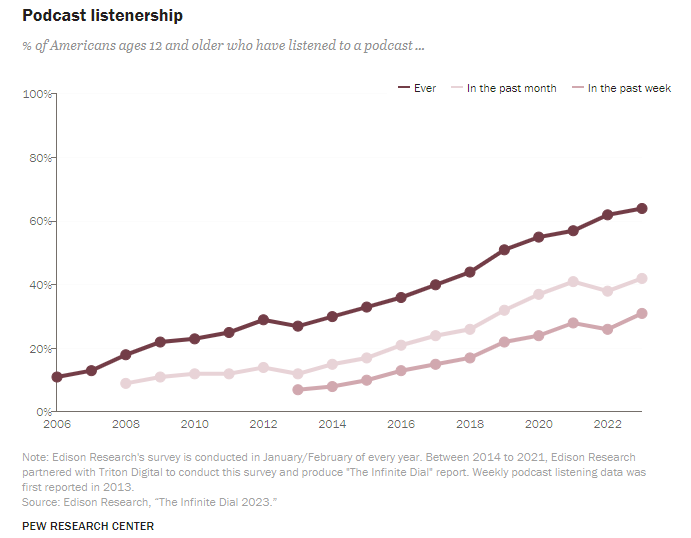
source: pewresearch.org
The popularity of podcasts has been soaring, and it’s not hard to see why. They offer the ultimate convenience – whether you’re relaxing at home, going for a walk, or hitting the gym, you can soak in valuable content through your headphones.
So, have you thought about taking advantage of podcasts in your content marketing strategy? If so, bear in mind that creating a good podcast requires a few key ingredients:
- Informativeness. Your podcast should be packed with substance, delivering real knowledge that’s genuinely valuable to your audience.
- Engaging titles. Your episode titles should be enticing and create a strong first impression. But remember, don’t go for misleading click-bait titles that disappoint your listeners.
- Optimal length. While opinions vary, it’s generally a good idea to keep episodes under 45 minutes to an hour, ensuring they remain engaging and digestible.
- Consistent release. Regularity is key. Whether it’s once a week or twice, sticking to a consistent release schedule keeps your audience coming back for more.
If you’re curious about the additional benefits of podcasts, check out our blog, where you’ll find an insightful article comparing podcasts and webinars.
Let’s create your content marketing strategy together and boost your business growth!
Video Content Marketing
Using videos to promote your online business is a great idea for a few simple reasons. Videos are interesting and can grab people’s attention better than just words or pictures. When you use videos, more people might find your business online because search engines like Google often show videos in search results. Plus, when people watch your videos, they’re more likely to buy your products or use your services. Also, videos can also help people trust your business because they show the real people and stories behind it.
🤔 Did you know that half of Generation Z and Millennials actually prefer user-generated video feeds over traditional streaming services? And it’s not just them – across all generations, most people love watching user-generated videos. Why, you ask?
Well, it’s because videos published on popular platforms like YouTube
- are free to watch,
- cover topics they’re genuinely interested in,
- are super convenient, and
- there’s always something new to discover.
Think about it this way: top social media platforms now offer a more engaging video experience compared to traditional TV. They serve up endless streams of shorter, user-generated videos that are personalized, interactive, and social – all without any cost. So, if you’re thinking about video content marketing, you’re tapping into a medium that’s not only popular but also incredibly engaging and accessible to a wide range of people.
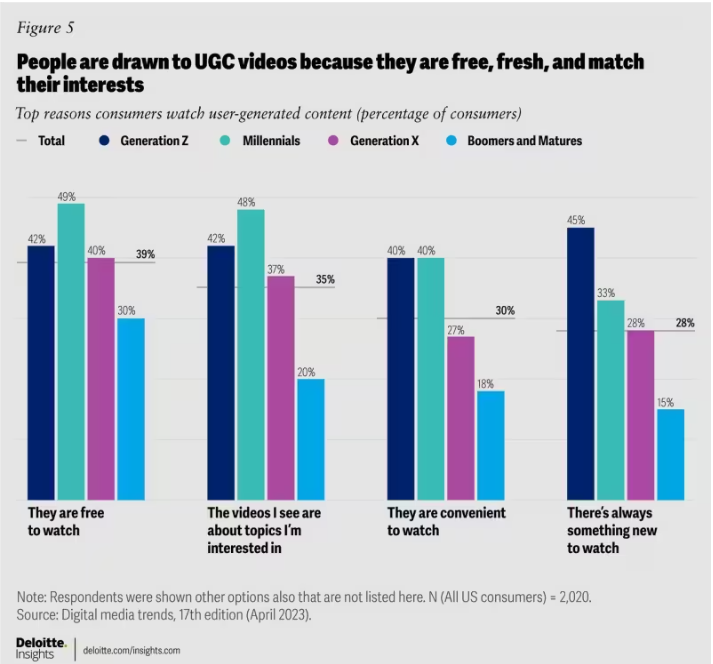
source: Deloitte
Here’s another question: Did you know that about 50% of consumers discover new products or services to buy through videos? And when creators review a product, around 40% of viewers are more likely to purchase it. That’s the power of trust in action.
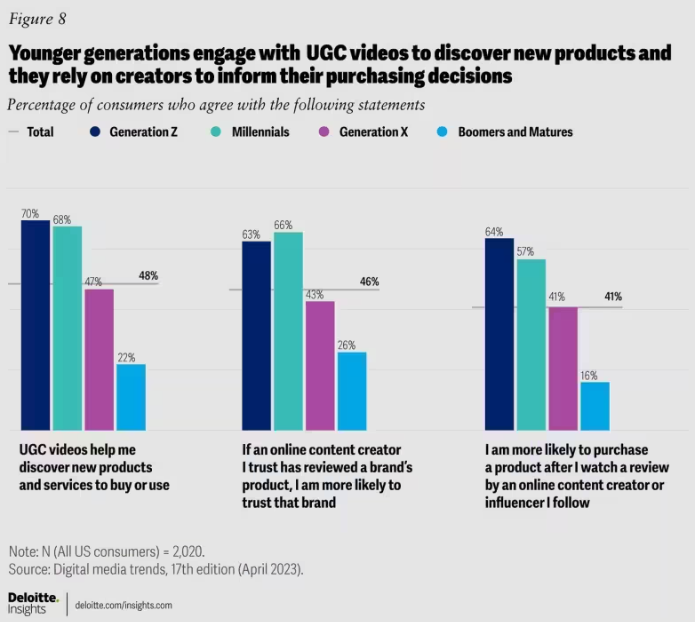
source: Deloitte
So, if you want to make your online business more successful, consider using videos to connect with your customers and get the word out about what you offer.
Check out our YouTube channel and get inspired to create your own video content marketing strategy!
How to: Excellent Video Content Marketing Strategy Guide
Creating an excellent video content marketing strategy requires careful planning and consideration of various elements. Here’s a step-by-step video content marketing guide to help you craft a winning strategy:
STEP 1: Define Your Goals
Start by setting clear objectives for your video content. Are you looking to increase brand awareness, drive website traffic, boost sales, or educate your audience? Having well-defined goals will guide your content creation process.
STEP 2: Know Your Audience
Understand your target audience’s preferences, interests, and pain points. This knowledge will help you create video content that resonates with them.
STEP 3: Select the Right Video Types
Choose the video types that align with your goals and audience. Consider using a mix of these options:
- brand videos – introduce your brand, its values, and the products or services you offer
- live videos – engage with your audience in real-time, promoting a sense of community and increasing engagement
- webinars – share in-depth knowledge on a specific topic to establish yourself as an industry expert
- testimonial videos – build trust and credibility by showing satisfied customers and their positive experiences with your brand
- unboxing videos – generate excitement around product launches by talking about and presenting your product’s features and benefits
- how-to videos – educate your audience on how to use your product or service effectively
STEP 4: Select the Right Platform
Adapt your video content for various platforms. While YouTube is a popular choice, consider other platforms like Vimeo, Wistia, or Twitch based on your audience’s preferences and the nature of your content.
STEP 5: Optimize Your Videos for SEO
Make your videos more discoverable by handling:
- video transcription – provide a transcript of your video content to make it more accessible to a wider audience and improve search engine indexing
- engaging thumbnail image – create eye-catching (tip: use faces) thumbnails that entice viewers to click on your video
- title and video description – write compelling titles and descriptions that include relevant keywords and accurately describe your content
- video tags (YouTube) – use relevant tags to improve discoverability on YouTube
- target keywords – use target keywords naturally throughout your video content, titles, and descriptions to enhance SEO
STEP 6: Be Consistent
Maintain a consistent posting schedule to keep your audience engaged and informed. Regularly releasing new content can help build a dedicated following.
STEP 7: Release Quality Clips
Invest in high-quality equipment, ensure good lighting and sound, and edit your videos professionally. Quality production values reflect positively on your brand.
STEP 8: Promote
Don’t rely solely on organic reach. Promote your videos through your website, email newsletters, social media channels, and collaborations with influencers or partners.
STEP 9: Engage with Your Audience
Actively respond to comments, questions, and feedback from viewers to foster a sense of community and build trust.
STEP 10: Analyze and Introduce Changes
Use analytics tools to track the performance of your videos. Analyze metrics such as views, watch time, and conversion rates to refine your strategy over time.
Join our Newsletter
Stay up to Date with News from the SEO World
5. Infographic Content Marketing
If you want to make your information easy to remember by your target audience, and if you want to increase shares, think about creating infographics.
Infographics are like colorful pictures that help share information super easily. They’re great for catching people’s attention and here’s why (the data you’re going to read in a moment are taken from Visme’s research):
REASON #1: 🌈🧠Colors are memorable. When you use colors in your infographics, people are 39% more likely to remember what you’re saying. It’s like painting your message in their minds.
REASON #2: ⏩💨 Faster info. Good infographics help people find what they’re looking for quickly. If you use colors smartly, they can save up to 70% of their time searching for the needed information.
REASON #3: 🧠🔑 Better understanding. Infographics make complicated stuff easier to understand. Reading comprehension goes up by 50%, meaning people get what you’re saying more easily.
REASON #4: 🤝🧐 Remembering more. People remember 65% of things they see visually, like in infographics. But when they hear things, they only remember 10%. So, using pictures and colors helps your message stick in their minds.
Trends in Content Marketing
Content marketing is always changing to keep up with what people like and how they use technology. That’s why it’s a good idea to stay updated with the recent content marketing statistics, right? Also, to help you come up with new content ideas, here are some big trends that website owners should know about, along with their benefits and downsides.
| Trend | What It Is | Benefits | Downsides |
| Influencer Marketing | Teaming up with popular social media personalities to talk about your products or services. | ||
| User-Generated Content | Getting your customers to make and share content about your brand. | ||
| Voice Search | Making your content work with voice-activated devices like Siri or Alexa. | ||
| Augmented Reality (AR) | Creating fun and interactive content that people can play with. | ||
| Interactive Content | Content that allows users to interact with it, such as quizzes, polls, or calculators. |

an example of an AR app; source: FurnitureToday
You’ve just learned various content marketing strategies to increase your brand’s recognition, establish trust, and engage your target audience. Now it’s time for the final section of the ultimate guide to content marketing, where we’re going to walk through the process of creating a comprehensive content marketing strategy.
6 Stages to Creating a Complete Content Strategy
By following these stages in your content marketing strategy guide, you’ll be well-equipped to create a comprehensive and effective content strategy that helps you achieve your business objectives and stand out in your industry.
STAGE #1: Set Your Goals
Setting clear and well-defined goals is the foundational step in creating a successful content marketing strategy. To guide your efforts effectively, you need to establish both short-term and long-term goals. But what are some of the main goals you can achieve with the help of content marketing?
- Reach a wider audience and make your brand more recognizable in your industry or niche.
- Establish trust and credibility among potential customers by providing valuable and relevant content to build positive relationships with your target audience.
- Create content that convinces visitors to take the desired action, such as signing up for a newsletter or making a purchase – or simply to improve your conversion rates.
- Use content to influence the decision-making process and drive more sales of your products or services.
- Encourage interactions, comments, and sharing of your content, fostering a sense of community and loyalty, which boils down to increasing user engagement.
- Content can also be a tool for finding potential business partners or collaborators.
While these are examples of goals achievable through content marketing, it’s essential to tailor your objectives to your specific brand and industry. I strongly recommend following SMART goals, which can maximize efficiency and keep you focused on your goals:
- Specific: Clearly define your goals rather than having vague ones.
- Measurable: Use real numbers to measure your progress.
- Achievable: Set challenging but attainable goals.
- Realistic: Focus on what you and your team can realistically accomplish.
- Time-Bound: Establish a deadline to keep yourself accountable and motivated.
By setting SMART goals tailored to your unique circumstances, you’ll be better equipped to create a content marketing strategy that brings you closer to achieving your business goals.
STAGE #2: Get to Know Your Potential Customers
Now that you’ve set your goals, it’s time to get to know the people you’re creating content for. Who are they? Who’s your audience? Imagine them as a character, like in a story. This character, called a persona, helps you understand your potential customers better. It’s like knowing your readers’ needs and preferences.
Here are some simple questions to create your persona:
- How old are they? Are they young, middle-aged, or older?
- What’s their education and job? Are they students, professionals, or something else?
- Where do they get information? Do they prefer websites, social media, or something else?
- How would they describe themselves? What words would they use?
If you’re not sure about these questions, you can check Google Analytics 4. This analytical tool stores information about your website visitors. These details will be super helpful in creating your persona.
STAGE #3: Choose Types of Content and the Distribution Channels
Now that you’ve set your goals and know your audience, it’s time to decide what kind of content you want to create and where you want to share it. Let’s make this easy:
Types of Content
Think about what kind of stuff you want to make. Do you want to write articles for your blog? Maybe you’re into cool infographics or fun videos. And don’t forget podcasts! Here are five popular content types to consider:
- 📚 Blog: Writing articles on your website.
- 📝 Social Media: Sharing posts and updates on platforms like Facebook, Instagram, or TikTok.
- 📹 Video: Creating videos for YouTube or other video platforms.
- 🖼️ Infographics: Making colorful images with useful information.
- 🎙️ Podcast: Recording audio shows that people can listen to.
Distribution Channels
Once you’ve decided on your content types, it’s time to think about where to put them. You have many options, like your own platforms or someone else’s. Here’s what you can think of using:
- Your Properties: This means your website or company blog, where you have control.
- Social Media: Like Facebook, Instagram, or X, where you can share your content.
- Other Websites: Sometimes, you can publish your podcasts or articles on someone else’s website, like a guest.
So, think about what type of content suits your goals and audience best. Then, choose the right places to share it.
Let us take care of your content marketing strategy!
STAGE #4: Set a Budget
Now, let’s talk money. How much are you willing to spend on your content marketing efforts? Here’s what you need to know before setting a budget for your content marketing strategy. The statistics are taken from the Semrush State of Content Marketing report.
Many businesses are putting a good chunk of their marketing budget into content. In fact, around 69% of them are dedicating more than 10% of their total marketing budget to content. That’s because they’ve seen the benefits.
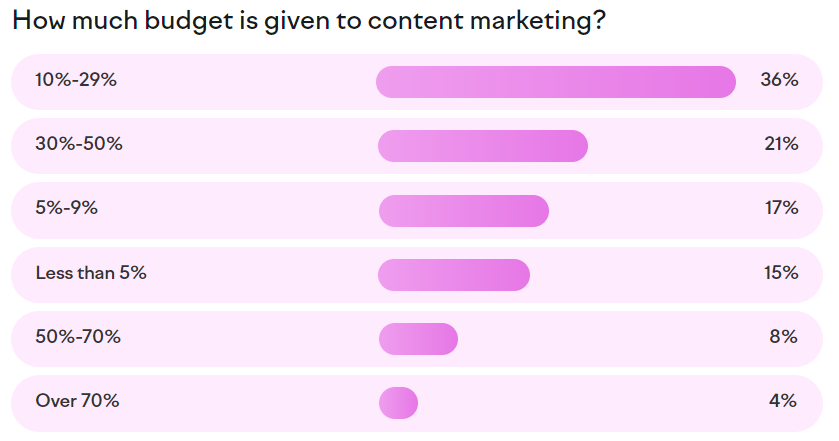
source: Semrush
People are spending different amounts every month on content marketing. While some start with less than $1,000, the more exciting part is that 53% of online business owners are investing over $3,000 each month. And guess what? According to the report, those spending less than $1,000 tend to have less success.
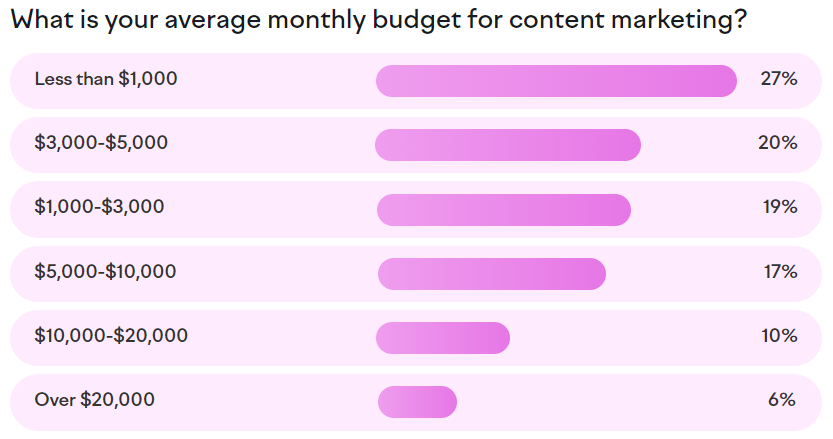
source: Semrush
It looks like more and more businesses are realizing the power of content marketing. In fact, 69% of those surveyed plan to increase their budget. This means that even with economic ups and downs, content marketing is doing well.
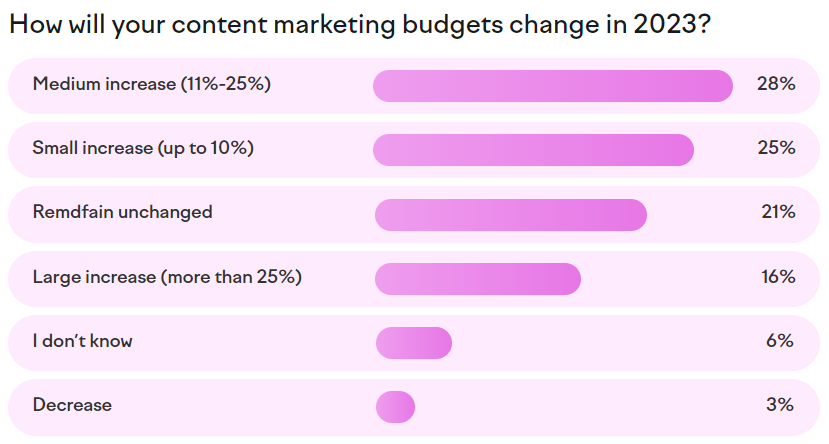
source: Semrush
Even though there are some economic concerns, around 76% of online business owners say it’s not hurting their content marketing plans too much. However, it might get a bit tougher for some in the future.
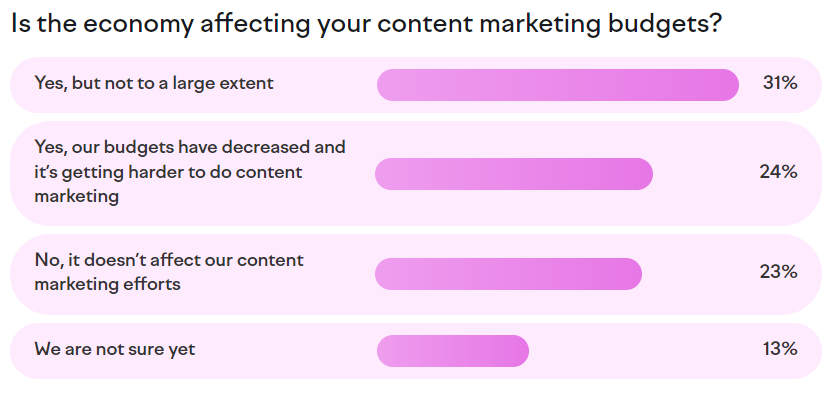
source: Semrush
So, when planning your content strategy, remember to set a budget that aligns with your goals and ambitions. It’s like deciding how much you’re willing to invest to make your content become recognizable and shareable.
STAGE #5: Create and Promote Your Content
You’ve done the groundwork, and now it’s time to roll up your sleeves and create fantastic content. Here are some simple tips, focusing on blog content marketing, but these tips work for other types of content too:
Creating Content
- Regular Updates: Keep your content fresh by posting regularly. It’s like watering a plant to make it grow.
- Originality is Key: Never copy from others. Original content is like a unique piece of art.
- Call to Action (CTA): Use creative Calls to Action (CTAs) to engage your audience. It’s like inviting them to a party.
- Internal Links: Add links to your other posts. It’s like building a bridge between your ideas.
- Credit the Author: Mention the author’s name and the date of publication. It’s like signing your name on a masterpiece.
- SEO Optimization: Make your content search-engine friendly. It’s like putting a map for search engines to find you.
- Schedule: Plan when to publish your content. It’s like setting a date for your big event.
Promoting Your Content
Even if you create amazing content, it won’t do its job if no one sees it. So, here’s how to get the word out:
- 📧 Email Marketing: Send creative emails to your subscribers about your new content or remind them of your popular posts. It’s like inviting friends to your party.
- 🤝 Engage in Communities: Join or create social media groups related to your niche and share your content there. It’s like sharing your art in an art gallery.
- 💰 Paid Promotion: If you want to reach a bigger audience quickly, consider Google Ads or Facebook Ads. It’s like putting up billboards to attract attention.
STAGE #6: Analyze and Measure the Effectiveness of Your Content Marketing Strategy
Don’t forget this crucial step: always measure how well your content is doing. It’s like checking the score after a game to see if you’re winning. Here are some important things to look at (the below table is based on Semrush’s Content Marketing Metrics):
| Content Metrics | Metrics | How to Measure | Tools |
| User Behavior | Pageviews | Track the number of page views. | Google Analytics 4 |
| Bounce Rate | Measure the percentage of visitors who leave quickly. | Google Analytics 4 | |
| New and Returning Users | Observe the ratio of new vs. returning visitors. | Google Analytics 4 | |
| Unique Visitors | Count the number of distinct individuals visiting your content. | Google Analytics 4 | |
| Average Time on Page | Monitor the average time visitors spend on your content. | Google Analytics 4 | |
| SEO | Organic Traffic | Analyze the number of visitors coming from search engines. | Google Analytics 4, Google Search Console |
| Backlinks | Check how many other websites link to your content. | Ahrefs, SEMrush | |
| Keyword Ranking | Assess your content’s ranking in search engine results. | SERP checkers, SEMrush | |
| User Engagement | Likes | Track the number of likes or reactions on social media. | Social Media Account |
| Shares | Count how many times your content is shared on social media. | Social Media Account | |
| Mentions | Monitor how often your content is mentioned online. | Google Alerts, BuzzSumo | |
| Revenue | Conversion Rate | Calculate the percentage of visitors who take the desired action. | Conversions/Total number of clicks |
| ROI (Return on Investment) | Measure the profitability of your content compared to your investment. | (Net Profit/Investment costs)*100% | |
| New Leads Generated | Determine how many potential new customers are acquired. | ImpactHero |
10 Takeaways from the Ultimate Content Marketing Strategy Guide
Creating a successful content marketing plan takes effort, creativity, and patience. But it’s totally worth it! The effort and creativity you put into content marketing strategy leads to better connections with your audience, increased brand recognition, more sales, and a stronger online presence. It’s an investment that pays off in many ways.
Here are some key things to remember:
✅ Use Your Money Wisely: It’s smart to spend some of your marketing money on content. Good content can bring you more customers.
✅ Know Your Audience: Understand the people you want to reach. Think of them as your friends. Know what they like and what they need.
✅ Try Different Stuff: Don’t just stick to one kind of content. Try blogs, videos, pictures, and podcasts. It keeps things exciting.
✅ Pick the Right Places: Choose where you share your content carefully. It could be your website, social media, or other websites that can help.
✅ Have Clear Goals: Set clear goals for your content. It’s like having a target to aim for.
✅ Keep an Eye on How You’re Doing: Check how well your content is doing. Are people looking at it? Are they liking it? Use tools to find out.
✅ Tell People About Your Content: Don’t just make content and hide it. Share it with emails, social media, or even some paid promotion.
✅ Don’t Give Up: Sometimes things get tough, but don’t give up. Keep making great content and connecting with your audience.
✅ Make Your Target Audience Happy: Create highly valuable content that informs and entertains. Demonstrate your expertise and share insights that genuinely benefit your audience.
✅ Build Relationships: Content is not just about selling stuff. It’s a chance to make friends with your audience, earn their trust, and show you’re an expert in your field.
If you ever need help with your content marketing strategy or want expert advice, don’t hesitate to reach out to us. Together, we will create content marketing strategy that not only grabs attention of your target audience but also helps you reach your business goals, whether it’s getting more views, more clicks, or more sales.
This is an update of the article published on October 9th, 2020.



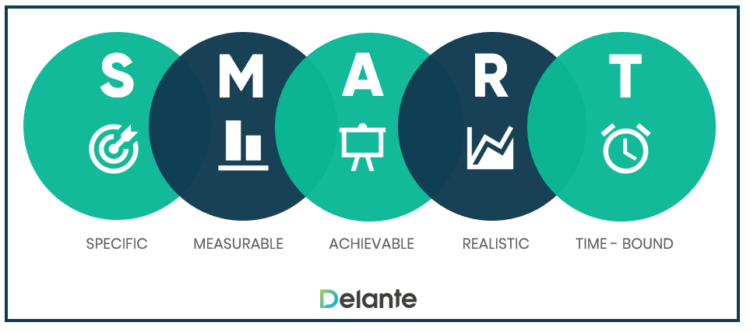


![How to Create an Ad That Will STAND Out? + [VIDEO]](jpg/how-to-create-ads-that-stand-out.jpg)









